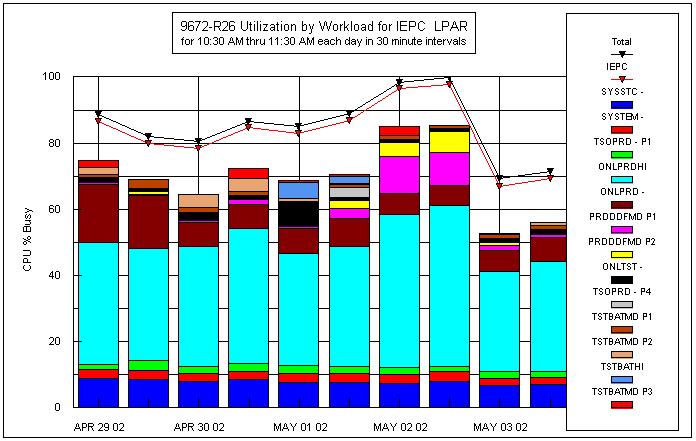| Tool Mentor: PM for z/OS - Model and Size Capacity Requirements |
 |
|
| Related Elements |
|---|
ContextTool mentors explain how a tool can perform tasks, which are part of ITUP processes and activities. The tasks are listed as Related Elements in the Relationships section. You can see the details of how processes and activities are supported by this tool mentor, by clicking the links next to the icons: DetailsPerformance and capacity planning is an important discipline in the z/OS™ environment. Typically the z/OS is an expensive, shared resource at the hub of many businesses because it is known for its data management and transaction processing capability. IBM® Tivoli® Performance Modeler for z/OS® provides capacity planning for the z/OS environment. To model an environment, a baseline of the current performance needs to be established. This process involves collecting performance measurement data to know the current operation of the z/OS environment. Performance Modeler takes input from IBM z/OS Resource Measurement Facility (RMF) or equivalent software. This baseline provides a view of the z/OS operating system and subsystems (both interactive and batch workloads). By definition, a system is out of capacity when it can no longer meet the service commitments made to the end users. To properly predict when capacity needs to be increased, any capacity-planning tool must be able to predict or model the impact of change on end-user performance. Systems programmers or operations professionals can use capacity planning or performance modeling tools to simulate the actual performance behavior of the mainframe computer. They can predict the output of these complex mainframe systems and also the impact of changing hardware or software. With this data, you can manage your zSeries or S/390 proactively. After building and calibrating a baseline model, all results will be compared to that baseline. Changing configuration definitions is relatively simple. IBM Tivoli Performance Modeler for z/OS V2.1 creates a simulation model that can easily be modified to reflect changes in the operating system when they occur. Modeling techniques generally fall into one of two categories - simulation or analytic. Analytic models consist of mathematical equations that describe the processes being modeled. Simulation models rely on running the actual process being modeled, but in a simplified form. IBM Tivoli Performance Modeler for z/OS V2.1 creates simulation models and has a distinct advantage over products that use analytic models when staying current with system changes. IBM Tivoli Performance Modeler for z/OS V2.1 can model a wide variety of hardware and software changes. It is a powerful tool that can help you analyze what-if scenarios. For example, it can model the effects of these changes:
An output metric is the performance of each workload modeled:
While the simulator is running, you can see a graphical picture of workload performance. You can choose up to 4 workloads from a panel of 20 workloads to display in a continuously updated line graph. IBM Tivoli Performance Modeler allows you to optimize mainframe system resource and thereby deliver optimum service for customer or user satisfaction. The tool allows you to be proactive to predict and plan the impact of additional or new workloads on z/OS and time future hardware upgrades to assist in the best use of company money.
For More InformationFor more information about this tool, click on the link for this tool at the top of this page. |
©Copyright IBM Corp. 2005, 2008. All Rights Reserved. |
